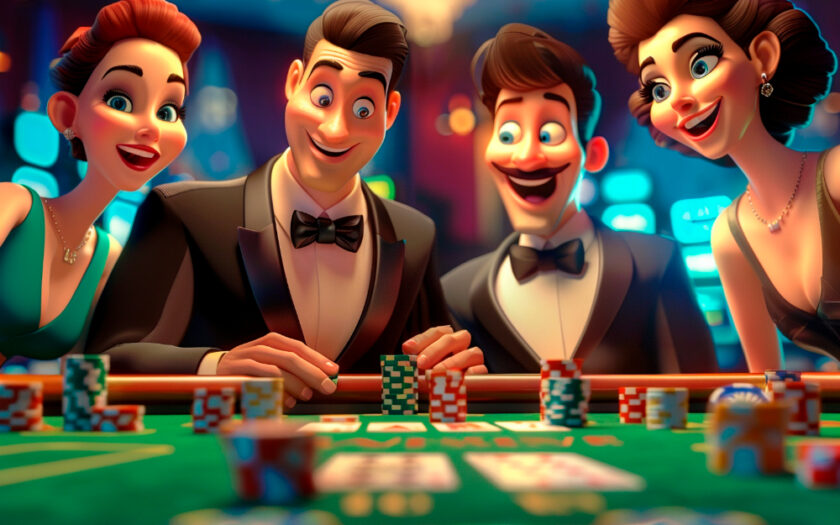Color psychology plays a significant role in casino game design, impacting players’ emotions and decisions. The strategic selection of colors goes beyond aesthetics, influencing how players perceive the game environment.
For example, vibrant hues like red and yellow are often used to create excitement and stimulate energy levels in players. On the other hand, calming colors such as blue and green can instill a sense of trust and relaxation, encouraging players to stay longer at the tables.
By understanding the psychological effects of colors, game designers can create immersive experiences tailored to elicit specific player responses. Next time you visit a casino, observe how colors are used in the environment to enhance your gaming experience.
Impact of Color on Player Perception
Studying the influence of color on player perception offers valuable insights into the impact of casino game design on gaming experiences. The colors utilized in casino games can elicit a range of emotions and responses from players. Warm colors such as red and orange are commonly linked with excitement and vigor, while cool colors like blue and green can induce a sense of tranquility and relaxation.
Through strategic incorporation of these colors in game design, casinos can shape how players interpret the gaming environment. Bold, vivid colors may capture attention and establish a dynamic ambiance, whereas softer tones can foster a more soothing atmosphere. Understanding the role of color in influencing player perception is essential for crafting games that cater to diverse preferences and enhance the overall gaming experience.
Influence of Color on Player Behavior
Color selection in casino game design can have a significant impact on player behavior. Warm colors such as red and orange are often used to evoke excitement and urgency, potentially encouraging players to take more risks. Conversely, cooler tones like blue and green can convey feelings of calmness and trust, possibly leading players to make more reasoned decisions.
Creating Immersive Gaming Environments
In order to enhance player engagement and immersion in casino games, designers should carefully design immersive environments that appeal to the senses and encourage player involvement. Elements such as dynamic lighting effects, thematic soundtracks, and interactive features responsive to player input can contribute to a captivating experience.
Through the use of high-quality graphics, realistic sound effects, and smooth gameplay transitions, designers can transport players to virtual worlds where they’re fully absorbed in the gaming environment. Incorporating advanced technologies like virtual reality can further enrich the immersive experience by providing players with a panoramic view of the game setting.
The ultimate aim is to create an environment where players are fully engrossed in the game and disconnected from the outside world.
Leveraging Color for Player Engagement
Utilizing color strategically in casino game design can significantly impact player engagement. The selection of colors can influence players’ emotions and behaviors in various ways:
-
Creating Excitement: Bold and vibrant colors have the potential to evoke feelings of excitement and anticipation among players, potentially prolonging their engagement with the game.
-
Setting the Mood: Warm colors such as red and orange can convey a sense of energy and urgency, while cool colors like blue and green may induce feelings of relaxation and tranquility, affecting the overall mood of the gameplay.
-
Highlighting Important Elements: The use of contrasting colors to emphasize crucial elements or rewards within the game interface can aid players in better understanding the game mechanics and navigating through the gameplay more efficiently.
Maximizing Player Experience Through Color
Understanding color psychology in game development is crucial for creating immersive player experiences beyond visual aesthetics. By strategically incorporating colors in casino game design, developers can evoke specific emotions and enhance gameplay.
Warm tones like reds and oranges can evoke excitement and urgency, suitable for high-stakes games. Conversely, cool colors such as blues and greens can induce a sense of calmness and relaxation, ideal for more laid-back gaming sessions.
Selecting color palettes that align with the intended mood of the game can boost player engagement and ensure a captivating gaming experience tailored to the audience’s preferences.
If you are interested in Tips for Creating a Winning Mindset When Gambling, read this article: https://casino-avtomaty.net/2025/01/02/tips-for-creating-a-winning-mindset-when-gambling/
Conclusion
Color psychology significantly influences player perception and behavior in casino game design. By strategically selecting colors that evoke specific emotions, game developers can create immersive gaming environments that enhance player engagement. Understanding the impact of color on player emotions and behaviors leads to a more tailored and enjoyable gaming experience. Observing the colors in a casino setting can offer insights into how they contribute to the overall gaming experience for players.

